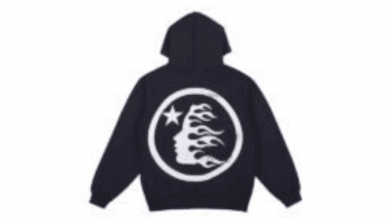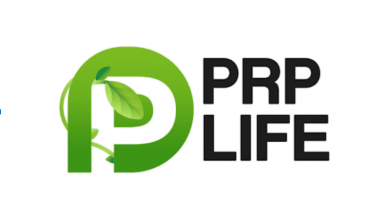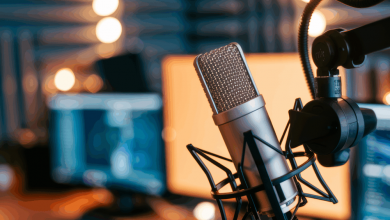From Manual to Intelligent: The Rise of AI-Led Influencer Campaigns

Influencer marketing has evolved from a niche tactic to a mainstream channel—one that commands billions in global ad spend. But while the industry has grown in visibility and value, the process behind running a campaign has remained surprisingly manual. Sifting through profiles, sending outreach emails, negotiating rates, and tracking results often meant long timelines and inconsistent outcomes.
That’s changing quickly.
In 2025, artificial intelligence is stepping in to transform how influencer campaigns are built and scaled. What once took weeks of coordination can now be done in hours, with greater precision and measurability. From audience analysis to creator matching and performance forecasting, AI is quietly becoming the engine behind a smarter, faster kind of influence.
This shift marks a major turning point—not just in how campaigns are executed, but in who runs them, how decisions are made, and how impact is measured. It’s no longer just about reach—it’s about relevance, and AI is making that measurable.
The Tipping Point: How AI Entered Influencer Marketing
For years, influencer marketing relied on intuition. Marketers selected creators based on follower counts, aesthetic alignment, and gut feel—hoping their brand would land in front of the right audience. But as the space grew more competitive and fragmented, guesswork became costly.
Artificial intelligence started gaining traction in adjacent areas like ad targeting and customer segmentation. Its entry into influencer marketing was inevitable—first as a support tool for analyzing engagement data, and now as a driving force behind campaign execution.
Today, AI doesn’t just help pick influencers—it evaluates audience authenticity, detects fake engagement, predicts content performance, and even suggests optimal posting times. In many cases, brands are turning to AI to automate the most time-consuming parts of campaign planning and to reduce the margin of error in creator selection.
Modern platforms like Hypefy have built these capabilities into accessible workflows, allowing marketers to shift from spreadsheets and cold emails to streamlined, insight-driven decisions. As adoption rises, what was once considered an experimental edge is fast becoming standard practice.
Key Benefits of AI-Driven Influencer Campaigns
As AI integrates deeper into influencer marketing workflows, the value goes far beyond automation. From discovery to performance, campaigns are becoming more targeted, scalable, and results-driven. Here’s where AI is making the biggest difference:
1. Precision in Influencer Discovery
AI can now analyze thousands of creators in seconds—filtering by niche, audience demographics, engagement patterns, and even past content tone. This takes the guesswork out of identifying who’s the right fit and helps brands avoid common pitfalls like fake followers or mismatched messaging.
Tools like the Hypefy Influencer Discovery Tool are built to make this process accessible, letting marketers vet creators based on real data—not surface metrics. The result: more relevant partnerships and better campaign outcomes.
2. Streamlined Campaign Launches
What used to take weeks of emails, proposals, and back-and-forth negotiations can now happen in a single dashboard. AI-enabled platforms help brands draft briefs, recommend pricing, and automate outreach based on campaign goals.
Marketplaces like the Hypefy Influencer Marketplace are becoming central to this shift—offering pre-vetted creators and a frictionless way to launch multi-influencer campaigns quickly and confidently.
3. Performance Forecasting & Optimization
AI doesn’t stop at discovery—it plays a key role after launch. By analyzing live data in real time, brands can see what’s working and adjust accordingly. Whether it’s shifting budget, updating content formats, or retargeting based on response, AI brings flexibility and insight to what used to be a static process.
Predictive analytics also help brands forecast ROI before campaigns even go live, enabling smarter budget allocation and reduced risk.
How to Run an AI-Led Influencer Campaign Today
While AI might sound like a tool reserved for tech giants, today’s platforms have made it accessible to marketers of all sizes. Running a data-driven, AI-supported influencer campaign no longer requires a complex stack—just the right strategy and tools. Here’s how to get started:
Step 1: Define Clear Campaign Goals
Before launching anything, clarify what you’re trying to achieve—whether it’s brand awareness, lead generation, product sales, or boosting user-generated content. The sharper your objective, the better AI can help guide decisions around influencer selection and campaign structure.
Step 2: Use AI to Identify the Right Creators
Instead of manually scrolling through profiles, AI tools can scan thousands of influencer accounts to find those with the right audience fit, engagement quality, and content alignment. These systems analyze not just numbers, but patterns—flagging potential mismatches and surfacing creators who resonate with your brand values.
Many discovery tools on the market now use predictive signals and audience insights to help marketers find long-term brand-fit creators in minutes.
Step 3: Launch Through an Influencer Marketplace
Once you’ve built your short list, marketplaces are making it easier to manage everything in one place—from outreach and briefings to approvals and payments. These platforms streamline the logistics and offer access to pre-vetted talent across niches and geographies.
Whether you’re managing a single campaign or scaling dozens, centralized workflows reduce overhead and increase the speed to launch.
Step 4: Track and Optimize in Real Time
One of AI’s biggest advantages is ongoing campaign optimization. Rather than waiting until the campaign wraps, marketers can now monitor engagement, conversion rates, and ROI in real time—adjusting content or targeting strategies on the fly.
This level of responsiveness turns influencer campaigns into dynamic, performance-driven assets rather than static marketing experiments.
What This Means for Brands and Creators
The rise of AI in influencer marketing isn’t just a shift in tools—it’s a shift in mindset. For brands, it means campaigns can be run with more accuracy, speed, and accountability. Instead of relying on assumptions or one-size-fits-all partnerships, marketers now have the data and infrastructure to make better, faster decisions.
Campaigns can be built around real engagement potential—not just follower counts—and adjusted in real time to improve performance. This changes the role of influencer marketing from a brand awareness tactic to a measurable growth channel.
For creators, the shift is equally significant. As platforms prioritize quality metrics and verified performance, influencers with strong communities—not just high reach—are in demand. Long-term collaborations, transparent deliverables, and value-aligned partnerships are becoming the norm.
And with marketplaces and discovery platforms doing much of the upfront matching, creators are spending less time chasing brand deals and more time creating content that matters to their audience.
Conclusion: The Rise of AI-Led Influence Is Just Beginning
AI is quietly but powerfully rewriting the rules of influencer marketing. What was once a fragmented, labor-intensive process is now becoming more strategic, automated, and performance-driven. From intelligent creator discovery to predictive campaign planning and real-time optimization, AI is equipping marketers with tools that reduce guesswork and increase impact.
But it’s not just about automation. At its best, AI supports—not replaces—the creative, human side of influence. It frees up time for strategy, storytelling, and genuine connection while handling the heavy lifting behind the scenes.
As more platforms adopt these technologies, the barrier to entry will only get lower. Whether you’re a growing brand or an established player, now’s the time to explore how AI can elevate your influencer campaigns—intelligently, efficiently, and authentically.

Source: From Manual to Intelligent: The Rise of AI-Led Influencer Campaigns



